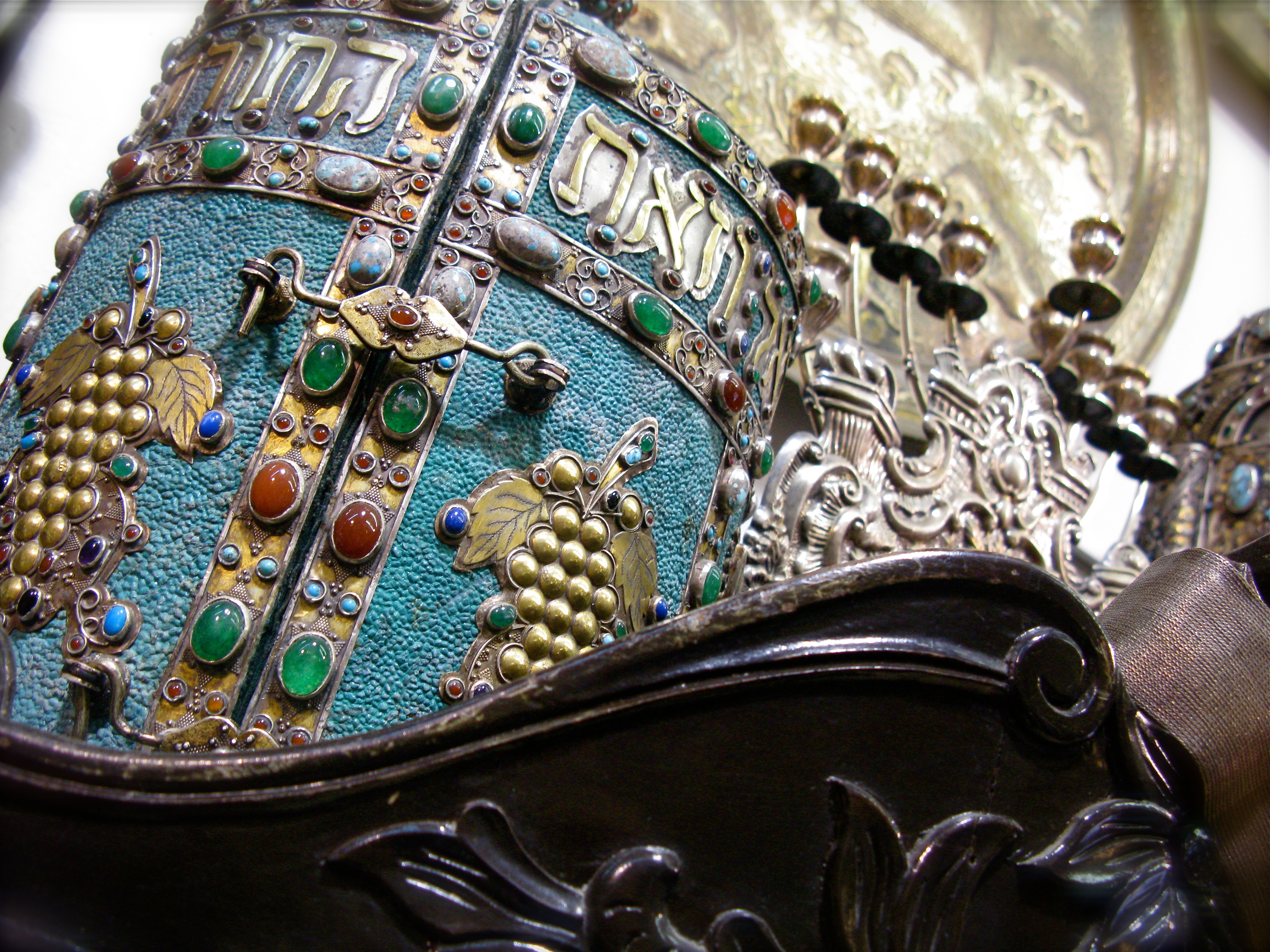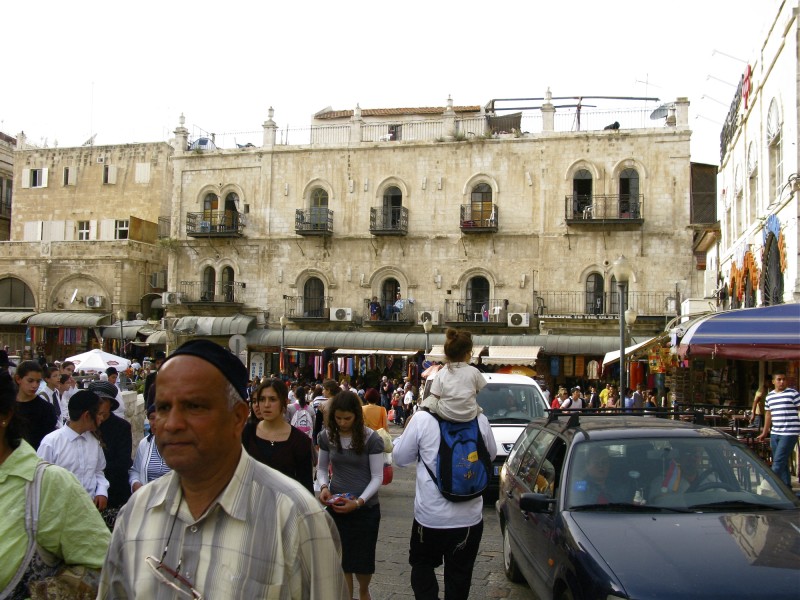
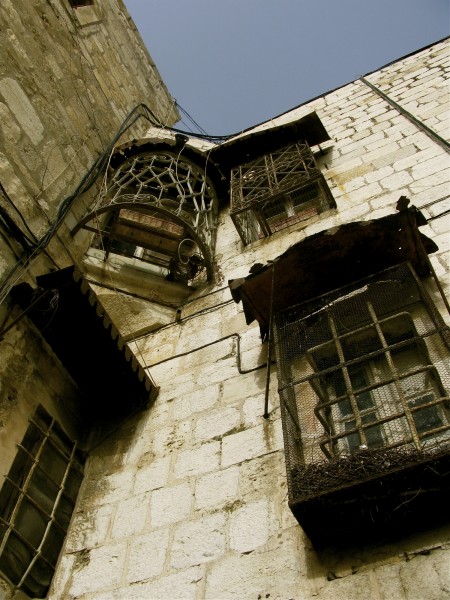
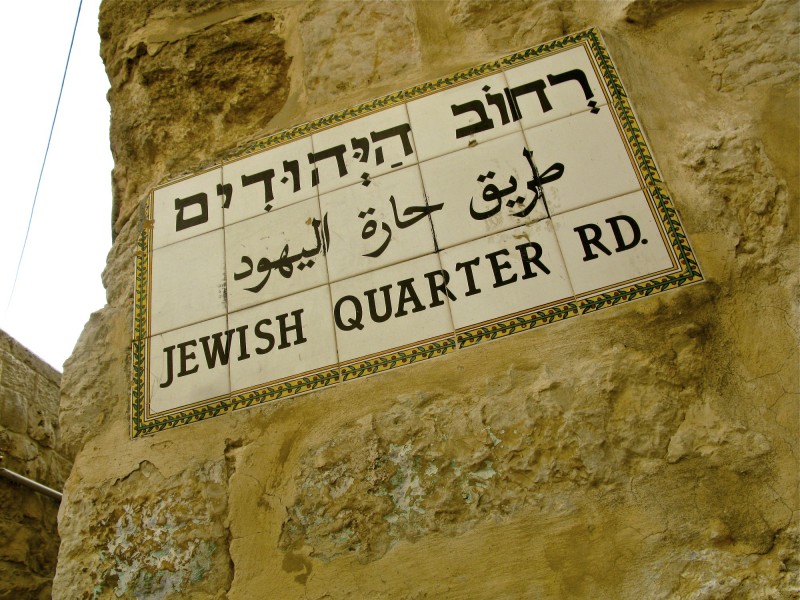
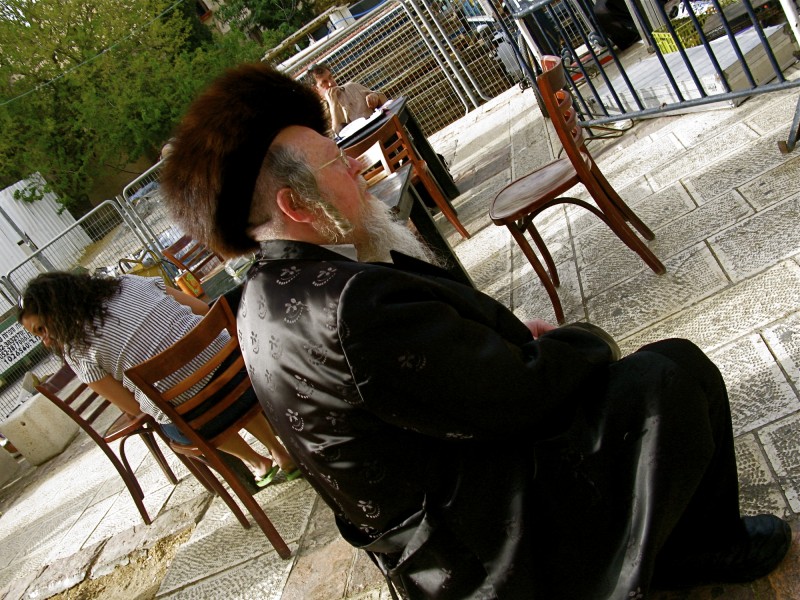
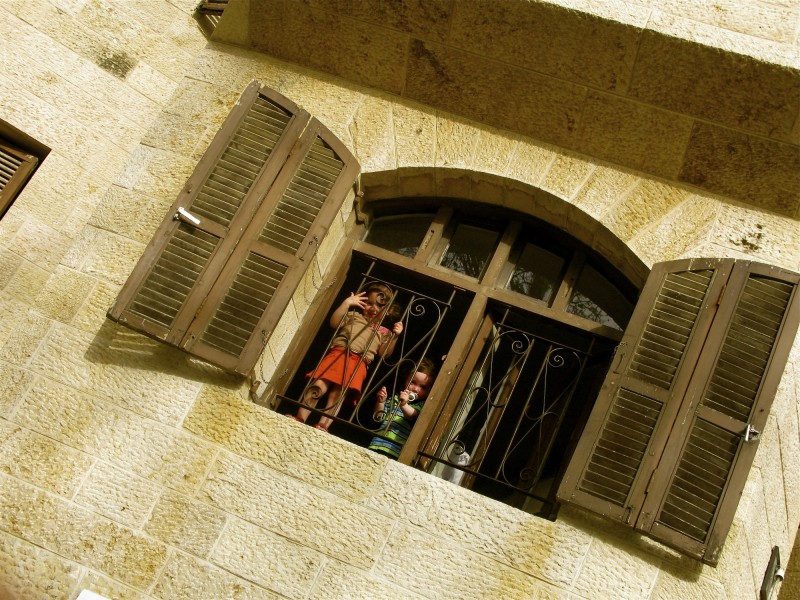
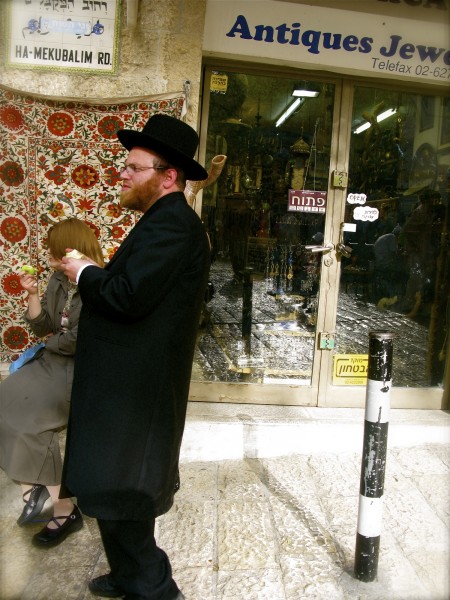
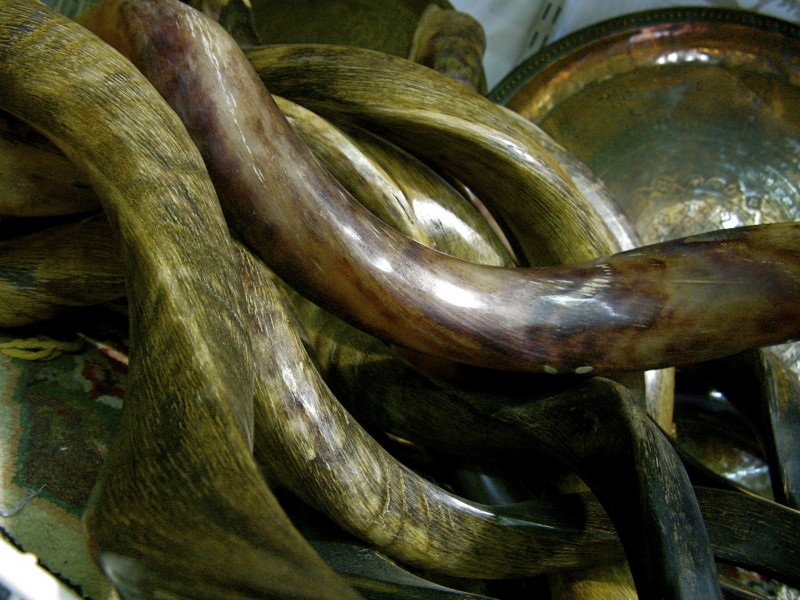
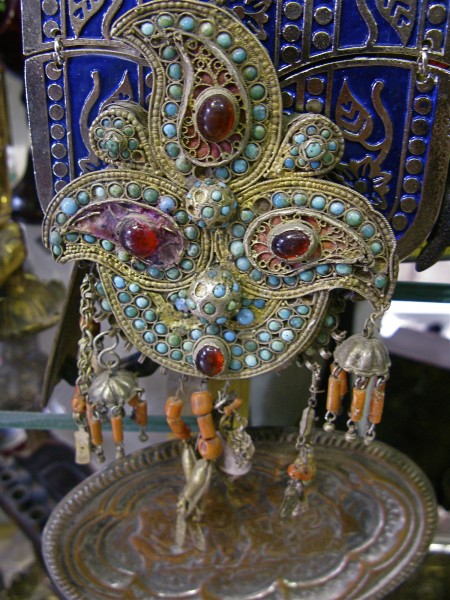
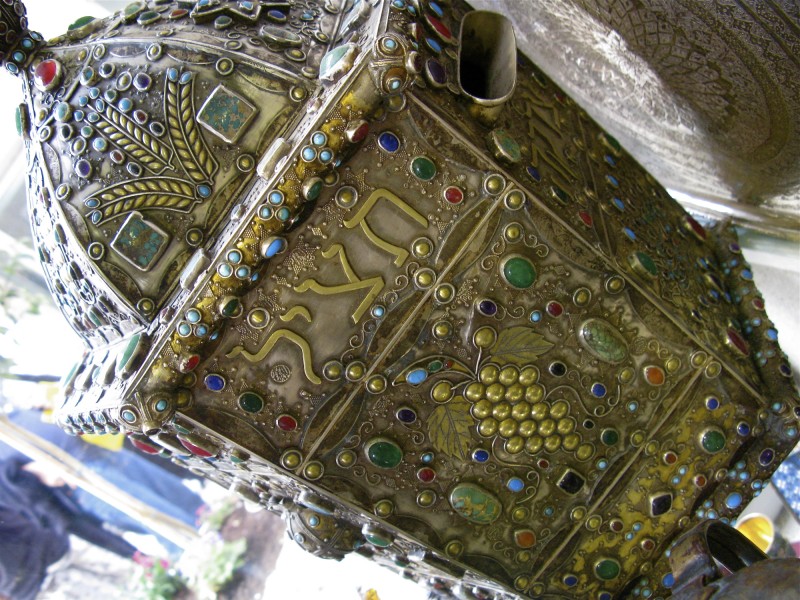
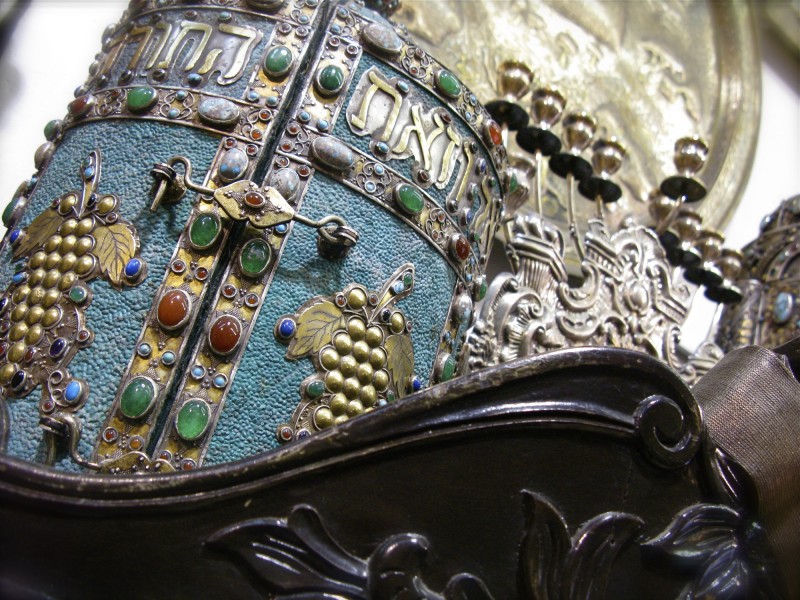

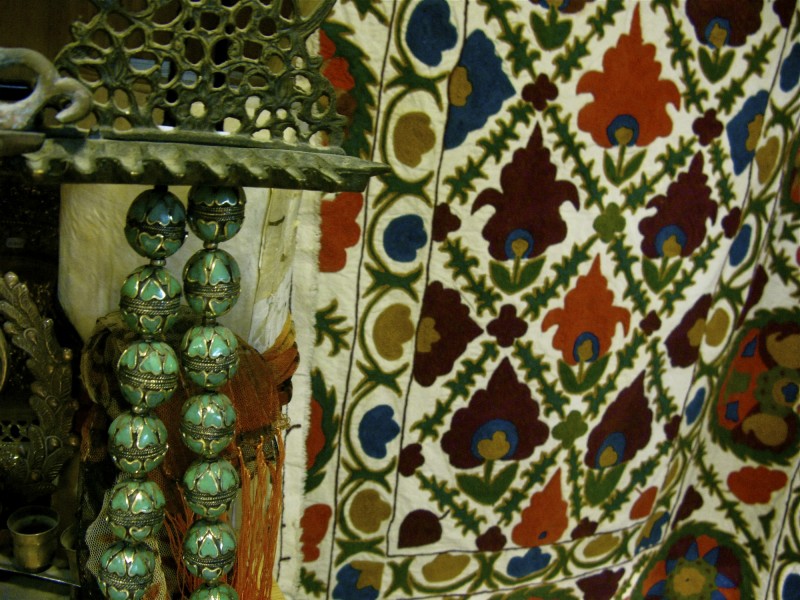

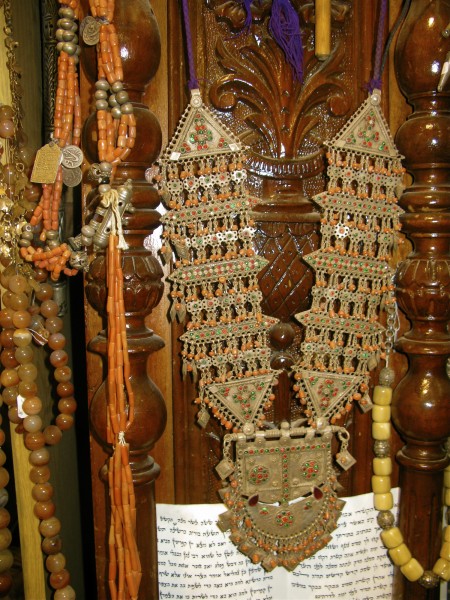

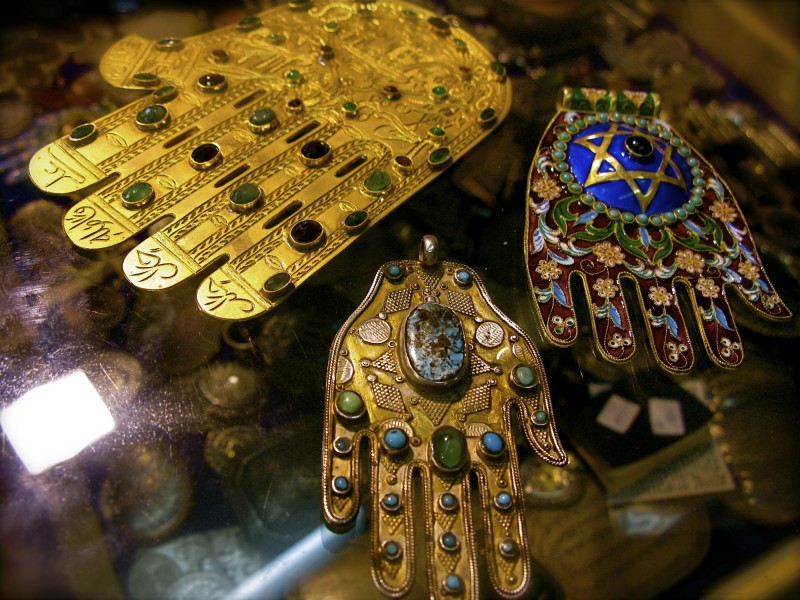
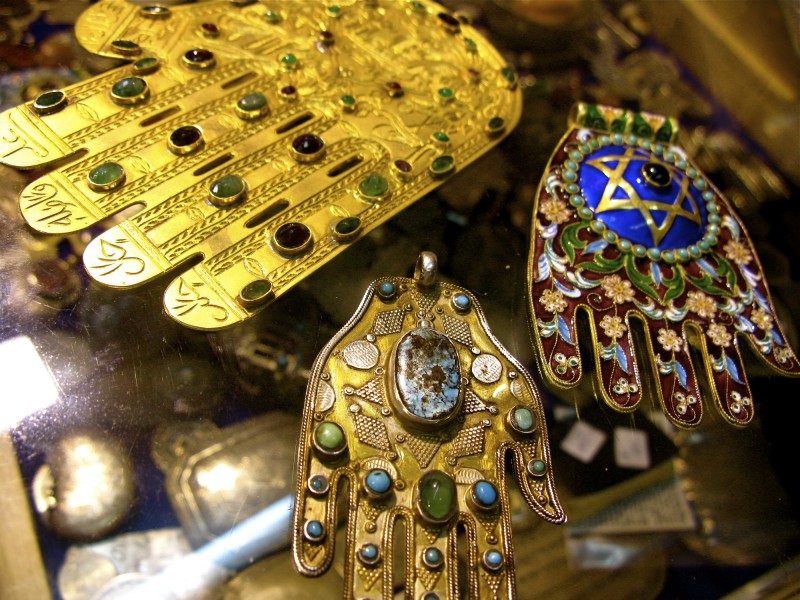

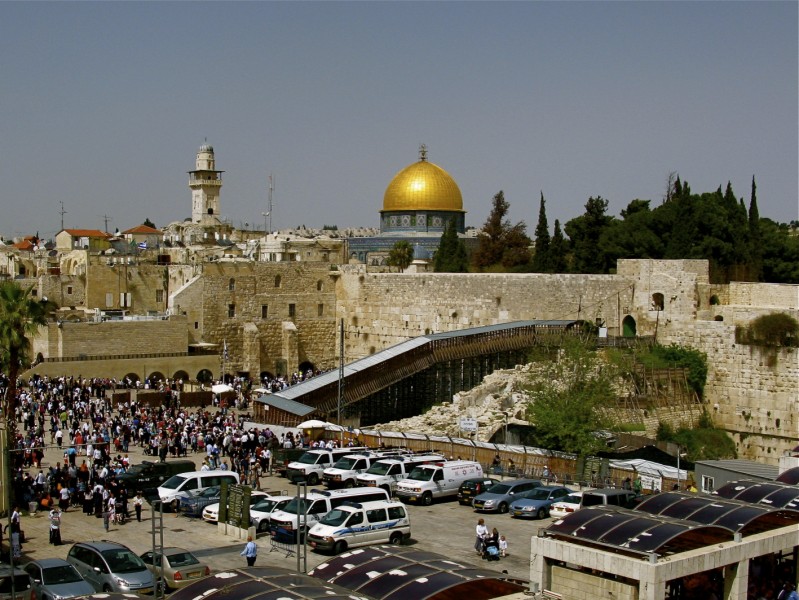


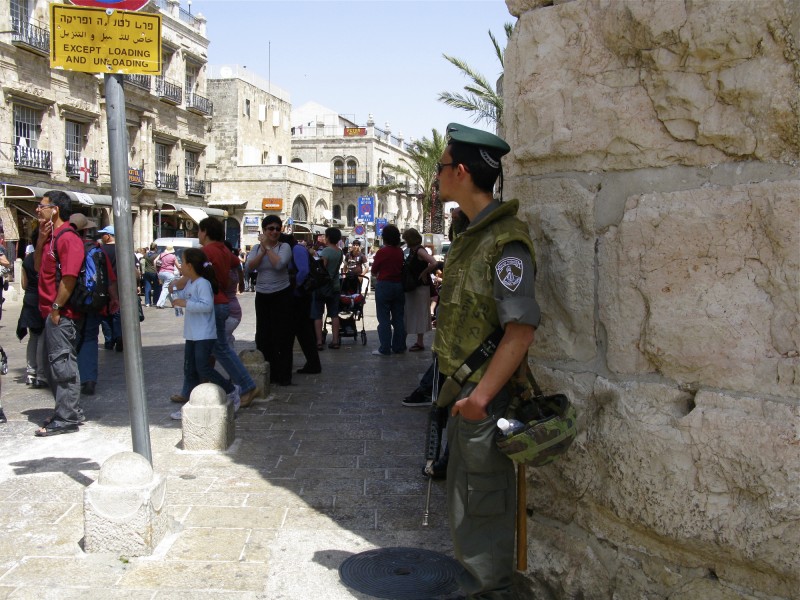
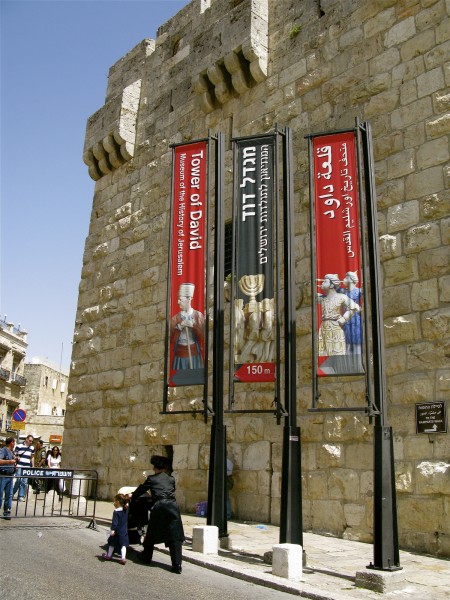

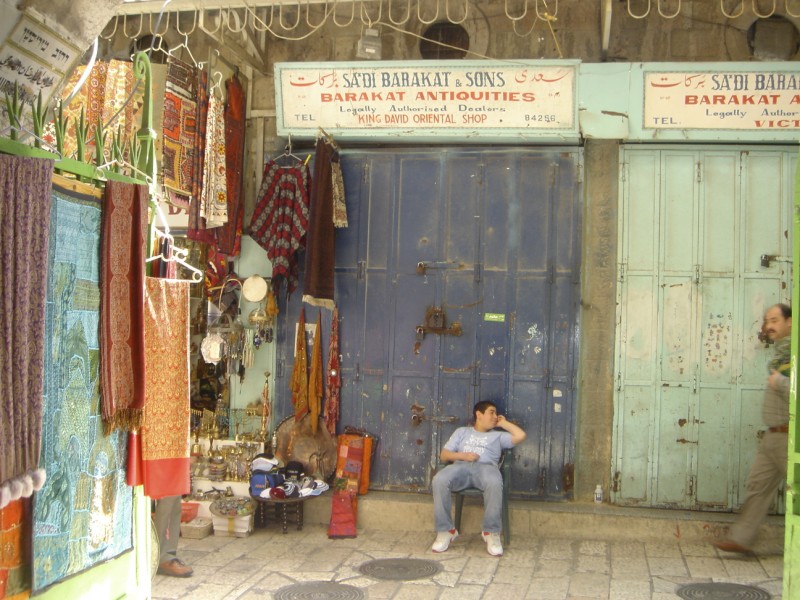
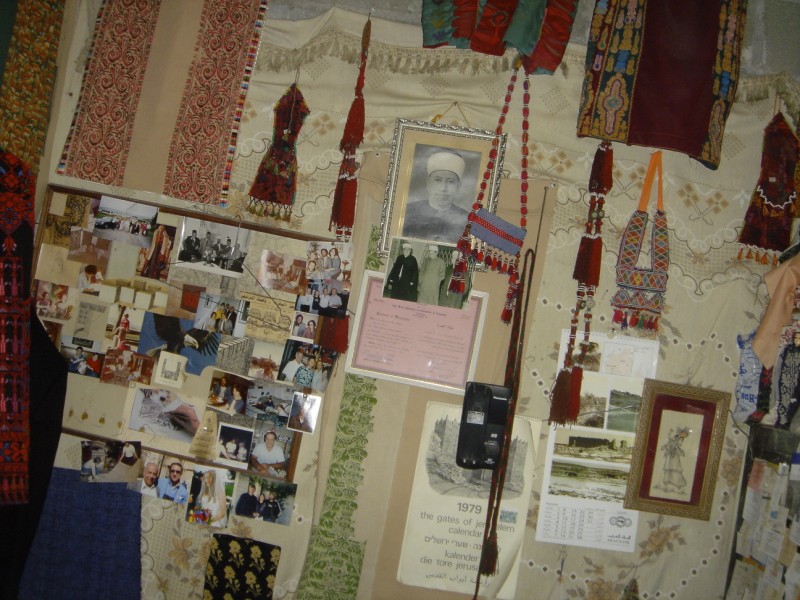
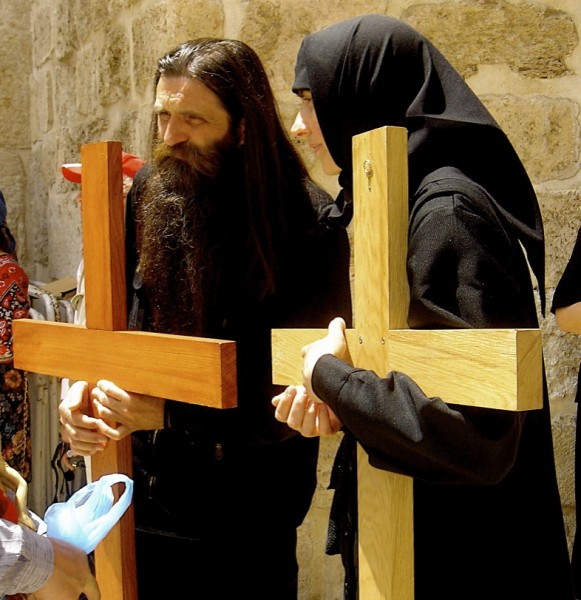

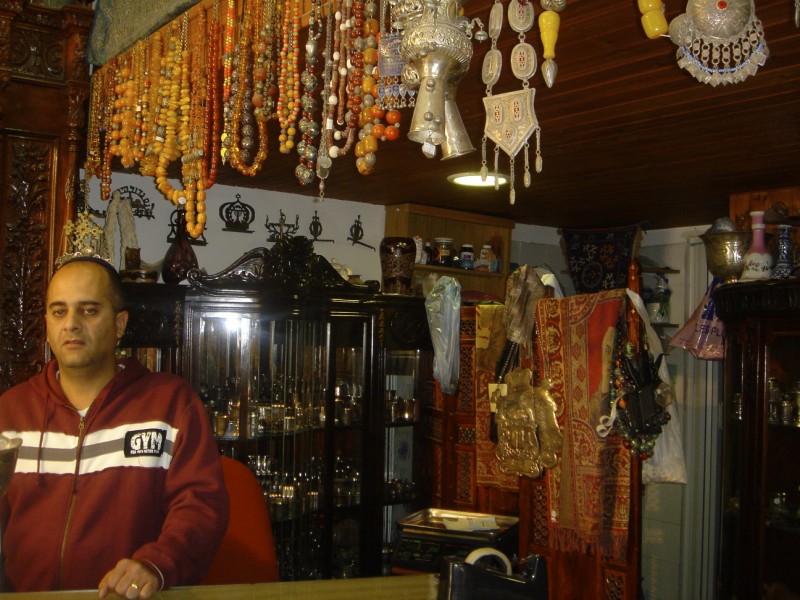 Every time I stroll around the narrow streets of the Old City I can’t avoid stopping in one of my favorite antique shops in the world. I usually like to visit after dropping my small paper carrying wishes and prayers among thousands of others into the minute openings of the Jerusalem stones at the Kotel.
Every time I stroll around the narrow streets of the Old City I can’t avoid stopping in one of my favorite antique shops in the world. I usually like to visit after dropping my small paper carrying wishes and prayers among thousands of others into the minute openings of the Jerusalem stones at the Kotel.
After the emotional, mystical experience, I like to have a Shawarma wrap of shaved lamb meat (sorry vegans!) with delicious warm and soft Pita bread and Hummus, and the typical Israeli salad which is made of finely diced tomatoes and cucumbers chopped into tiny bits and dipped in an olive oil and fresh lemon juice.
But the owner of my favorite small antique shop knows I am coming. I called him to make sure he has some new vintage Hamsas for my collection.
“Shalom Yael- come in! I have been waiting for your visit, how have you been? Such a long time, you don’t like Israel anymore? Of course I ‘ve got what you need!- A whole new collection of old, very old favorites of yours…..have a look, don’t rush, would you like a Turkish coffee, or maybe you prefer a nana tea? Who is the handsome gentleman at your side? Your boyfriend? Maybe you will need an old Torah case. Would you like to have a look? It’s from Persia which was old Iran you know, right?”
He asks so many questions at once and I realize he needs none of the answers, he just wants me to take something home. The Torah case is absolutely magnificent, encrusted with semi-precious stones dating of the beginning of the century. It is also inlaid with beautiful silver and gold representations of grapes with large Hebrew letters on top. The whole case is wrapped in a sort of intact turquoise stone finish — my favorite color — and other interesting ornaments.
Tikim
In antiquity, cloth mantles or bags (tikim) were used to protect the Torah scroll, the most sacred object in Judaism. By the eleventh century, rigid cases, also called tikim, were made from wood, copper and silver, according to an inventory in 1059 from the Jerusalemite Synagogue that was found in the Cairo Genizah, a repository for old and worn Hebrew texts dated from the eighth to the thirteenth century.
I look around, fascinated, and old stories from my grandfather in Aleppo, Syria come to mind. The vendors who made me promise not to reveal their names are closely watching each and every one of my moves while my friend from the army steadily returns their attentive gaze . Suddenly my hands come across a large group of antique, old and semi-new Mezzutotz cases. Wow! Such a nice feeling to be able to touch so many at the same time. Their materials and region of provenience vary: silver from Syria, enamel from Turkey, copper from Egypt…..
Mezuzah
The mezuzah is small piece of parchment inscribed with the biblical passages Deuteronomy 6:4-9 and 11:13-21 and marked with the word Shaddai, a name of the Almighty, that is rolled up in a container and affixed by many Jewish households to their door frames in conformity with Jewish law and as a sign of their faith.
The Talmud says that a mezuzah should be within “your gates”, as the Biblical phrase goes. In other words, it should be within the transition space between outside and inside. This seems to emphasize that we need G-d to be with the Jewish people when they go through transitions in their lives.
I carry on with my small expedition. This unique shop is tiny but it looks like the tavern of Ali Baba — nothing stolen obviously, only very rare treasures… among them, embroidered Passover pillowcases and textiles from the Ottoman empire, Seder plates , candelabra, wine holders, Matza Bags, enamel necklaces, Khallah knives, Tzedakka (charity) boxes, decanters, old ketubbot from Persia.
Ketubbah
Marriage is one of the most important mitzvot, or commandments, in Judaism, and Scriptures are replete with verses encouraging the union of man and woman. One of the essential elements of a Jewish wedding ceremony is the writing and transfer of a marriage contract, or ketubbah (plural, ketubbot). The ketubbah was originally formulated to protect a woman’s rights in marriage by establishing the financial obligations of the groom toward his bride in cases of divorce or death.
Ketubbot produced in the Near East are usually written on paper, and they are strongly influenced by Islamic art in their lack of figures and their decoration with aniconic motifs. Persia was the most important center of ketubbah illumination in the Islamic world. In fact, Muslim law requires a contract in order to legalize a marriage, and in Persia it was customary for Muslims to decorate marriage contracts. Since Jewish law also required a contract, Persian Jews seem to have modeled their marriage contracts on those of the Muslims.
But the most exotic of my findings is a group of Shofarims from Yemen, displayed in a large shelf near the window overlooking an Old City small street. I had never seen one so close, only when I attended the synagogue for the celebrations of the Jewish holidays of Rosh Hashana and Yom Kippur. Moreover we are told that we are not even allowed to look while the rabbi blows the sacred horns during those ritualistic ceremonies.
Shofar
The shofar is a ritual musical instrument, made from the horn of a ram or other animal, used on important Jewish public and religious occasions. In biblical times the shofar sounded the Sabbath, announced the New Moon, and proclaimed the anointing of a new king. This latter custom has been preserved in modern Israel at the swearing in of the president of the state.
My BlackBerry bubble vibrates with a cricket sound in the pocket of my Khaki vest. It’s my mum texting ”Where are you spending Shabbat?” — “Oh my God, Shabbat! It’s soon Shabbat, I am going for dinner at my Israeli friend’s parents’ home and I would like to offer them something cute with a religious aspect. It’s the first time I am invited and would like to look good. …let me see….
Kiddush Cup
Kiddush, in Hebrew, literally, “sanctification” is a blessing recited over wine or grape juice to sanctify the Shabbat, Jewish holiday or a Bat/Barmitzvah. The Torah refers to two requirements concerning Shabbat – to “keep it” and to “remember it”.
Jewish law therefore requires that Shabbat be observed in two respects. One must “keep it” by refraining from thirty-nine forbidden activities, and one must “remember it” by making special arrangements for the day, and specifically through the kiddush ceremony. Reciting kiddush before the meal on the eve of Shabbat and Jewish holidays is thus regarded as a commandment from the Torah. Some say it is also the inspiration for the Holy Grail.
It’s getting late. I pick one more Khamsa in copper with encrusted turquoise for my collection, an 18 century berber necklace in Amber from Algeria, and I am planning to take to my host a cute silver box for matches with a Magen David motif on its cover for lighting the Shabbat Candles….But look at this magnificent silver Menorah right next to the Torah case.
Menorah
The menorah is a seven-branched candelabrum which has been a symbol of Judaism for almost 3,000 years and is the emblem of Israel. It was used in the ancient Holy Temple in Jerusalem. Lit by olive oil in the Tabernacle and the Temple, the menorah is one of the oldest symbols of the Jewish people. It is said to symbolize the burning bush as seen by Moses on Mount Horeb (Exodus 3).
(Parshat Terumah) Exodus 25:31-40 lists the instructions for the construction of the menorah used in the temple.
The vendors and my friend negotiate my bill in Hebrew — they are speaking loudly. One of them makes a phone call, the other makes a sign with his head as a ‘no, no, no, impossible too much discount.’ I really don’t care at the end I will want to take everything with or without a discount. My Israeli friend is disappointed that I don’t bargain enough. Without hesitating on silly numbers, I am in a hurry and will be late for Shabbat candle lighting. I reply, “Rush Avi, It’s almost sunset!”
Joelle’s Tips:
The Antique Shop:
